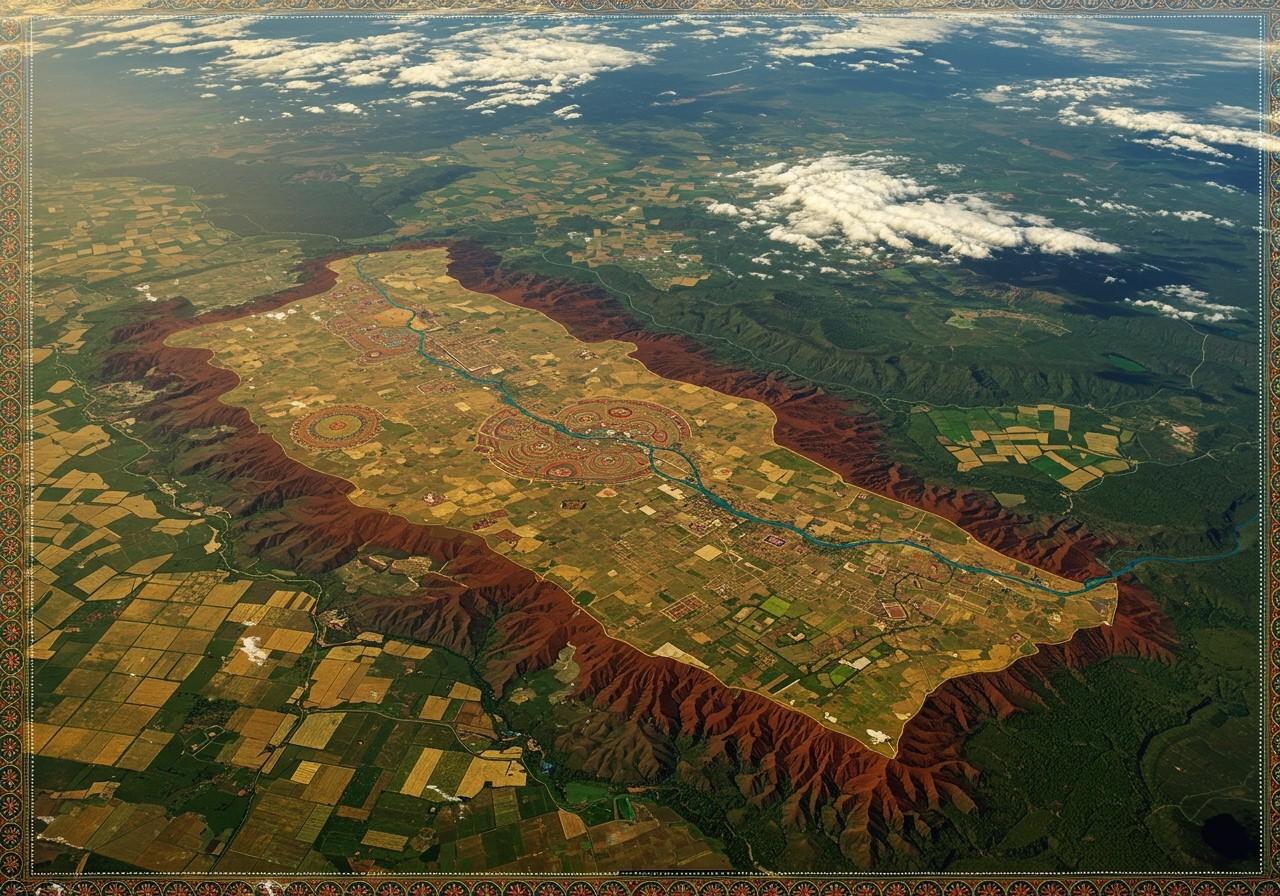
The Deccan Plateau, a vast and ancient landform in India, holds immense geographical, cultural, and historical significance. Covering an extensive area of 422,000 km², it stretches across southern and central India, bordered by the Satpura and Vindhya Ranges in the north and extending to the northern fringes of Tamil Nadu in the south. This elevated region is a treasure trove of diverse ecosystems, rich mineral wealth, and ancient geological formations, shaping the natural landscape and cultural heritage of the region. For those seeking to connect with India’s traditions and natural wonders, understanding the Deccan Plateau is essential.
What is the Deccan Plateau?
The Deccan Plateau is a large, triangular-shaped plateau bounded by the Eastern and Western Ghats mountain ranges. It’s one of the oldest plateaus globally, with a geological history spanning millions of years.
Key Features of the Deccan Plateau
- Location and Size: Situated in southern and central India, the Deccan Plateau covers a vast area of 422,000 km². It spans across parts of Maharashtra, Kerala, Karnataka, Tamil Nadu, and Andhra Pradesh.
- Geological Formation: Primarily formed by volcanic activity, the plateau is largely composed of basalt rock. This geological composition contributes to the fertile black soil known as ‘regur,’ which supports extensive agriculture.
- Elevation: The average elevation ranges from 600 to 900 meters above sea level, with some peaks reaching even higher altitudes.
- River Systems: Important rivers, including the Godavari, Krishna, and Kaveri, originate in the Deccan Plateau, providing vital water resources for the region.
- Climate: The plateau experiences a tropical climate characterized by distinct wet and dry seasons.
- Biodiversity: The Deccan Plateau is home to a diverse range of flora and fauna, including several endemic species, particularly in the Western Ghats, a recognized biodiversity hotspot.
Geographical Significance
The Deccan Plateau’s geographical features profoundly influence India’s natural resources and landscape.
Impact on Environment and Resources
- Soil and Agriculture: The fertile black soil, ‘regur,’ is ideal for agriculture, particularly cotton cultivation, contributing significantly to India’s agricultural output. This rich soil is a result of the plateau’s unique volcanic origins.
- Water Resources: The rivers originating from the plateau are essential for irrigation, drinking water, and hydroelectric power generation, supporting the livelihoods and development of the region.
- Mineral Wealth: The Deccan Plateau is abundant in mineral resources, including iron ore, manganese, and bauxite, playing a crucial role in India’s mining industry and industrial development.
- Forests: The plateau is covered with deciduous forests, providing valuable timber and non-timber forest products.
- Climate Influence: The plateau’s elevation and geographical location influence monsoon patterns, affecting the climate of surrounding regions.
- Natural Barriers: The Eastern and Western Ghats act as natural barriers, impacting the movement of people, goods, and weather systems.
Historical and Cultural Importance
The Deccan Plateau has been a cradle of ancient civilizations and empires, shaping India’s rich cultural tapestry.
Influence on Culture and History
- Ancient Civilizations: Inhabited since prehistoric times, the plateau boasts evidence of early human settlements and cave paintings, reflecting a long and vibrant history.
- Dynasties and Empires: The Deccan Plateau was the seat of powerful dynasties like the Satavahanas, Chalukyas, Rashtrakutas, and the Vijayanagara Empire, leaving behind a legacy of architectural marvels and cultural traditions. Explore the stories of Hanuman’s journey (https://www.poojn.in/post/14942/hanumans-journey-devotion-strength-and-epic-tale-2) and Lord Rama (https://www.poojn.in/post/14940/lord-rama-ideal-leadership-and-virtue-2) to delve deeper into the region’s epic history.
- Architectural Marvels: The region is renowned for architectural wonders like the Ajanta and Ellora caves, the ruins of Hampi, and the Gol Gumbaz, showcasing the artistic and engineering prowess of past empires.
- Cultural Practices: The Deccan Plateau is a melting pot of unique cultural practices, including traditional music, dance, and festivals. Discover more about Hindu philosophy (https://www.poojn.in/post/14938/hindu-philosophy-explained-a-beginners-guide-2) and symbolism (https://www.poojn.in/post/14935/hindu-symbols-explained-their-meanings-and-importance-2) to gain a deeper understanding of the region’s cultural richness.
- Language and Literature: The plateau is home to a diverse linguistic landscape, with languages like Kannada, Telugu, Marathi, and Tamil flourishing in different parts of the region.
- Trade and Commerce: Historically, the Deccan Plateau served as a crucial trade route connecting northern and southern India, facilitating economic exchange and cultural diffusion.
- Religious Significance: The plateau is dotted with important religious sites and pilgrimage centers, attracting devotees from across the country.
Poojn.in: Your Spiritual Companion in the Deccan Region
Recognizing the Deccan Plateau’s rich spiritual heritage, poojn.in offers a wide range of puja items and religious materials to support devotees across the region. We provide everything you need for your spiritual practices, from complete puja samagri kits tailored to regional customs to traditional brass and copper items used in Deccan temple rituals. Explore our collection of pure cotton vastras, authentic kumkum, vibhuti, and other essential puja items. We also cater to the needs of temples and religious institutions in the Deccan region, offering bulk supplies of camphor, dhoop, cotton wicks, pure ghee, and puja accessories. All our products are quality-checked and delivered conveniently across major Deccan cities, including Hyderabad, Bangalore, Pune, and surrounding areas. Visit https://www.poojn.in to discover our complete range.
Conclusion
The Deccan Plateau is more than just a geographical feature; it’s a testament to India’s rich history, diverse cultures, and abundant natural resources. Understanding its significance allows us to appreciate the deep connections between the land, its people, and their traditions. From the fertile soils that nourish agriculture to the life-sustaining rivers, the Deccan Plateau is integral to India’s ecological and cultural landscape. Preserving this unique region for future generations is crucial for safeguarding India’s heritage.


